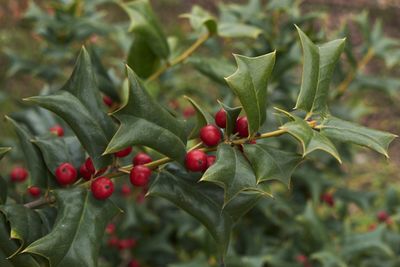English Holly Facts
English holly plants are found primarily in Europe. The lovely trees are common throughout Britain, where you can find entire forests of them. You can also find them in western and southern Europe and western Asia. These hollies can be identified as either large shrubs or else small trees. The typical height of English holly plants is only 10 to 40 feet (3 to 12 m.). The deeply lobed leaves are the primary joy for those growing English hollies. They grow in densely, a deep, shiny green. Look out, though. You’ll find spines around the edges. Berries are also a big attraction of the tree. All female English holly plants produce fragrant flowers in early summer. These develop into bright berries in red, orange, yellow and white. Red is the most common shade. These holly plants also boast beautifully smooth bark that is often ash-colored or black.
How to Grow English Holly
Although English holly plants are native to Europe, they are cultivated in forests, parks, gardens and plains around the globe. English holly grows in several of the American states. These include California, Oregon, Hawaii, and Washington. How to grow English holly? First, check your climate and region. English holly plants thrive in U.S. Department of Agriculture plant hardiness zones 6 through 8. If you are in one of those zones, you can go ahead. Plant hollies in full sun or partial sun but remember that they do not tolerate extreme heat very well. In hotter climates, a partial shade location will be better. These plants absolutely require well-draining soil, so don’t disappoint them. They may not make it through one season if they are planted in wet soil. English holly plant care isn’t difficult if you site the tree correctly.
